Papaya Tree
$34.95 Original price was: $34.95.$24.47Current price is: $24.47.
- Safe Payments for a Better Shopping Experience
- 100% High-Quality Guarantee
- Top Quality Products
- Quality You Can Count On

The Easiest & Best Papaya to grow at home
Fruitful Papaya Tree
Pick up to 60-80 lbs of fruit in a season! Expect this Papaya to produce fruit the very first year. And your tree will grow up to a manageable size. So while other trees are growing taller, your tree is growing fruit. You won’t have to worry about climbing a ladder to pick these delicious papayas. The green skin ripens to gold. Inside, the soft flesh is bright orange.
Grow Anywhere!
You can grow this Papaya tree anywhere in the country. If you’re in zone 9-11 you can plant it in the ground, but will need to protect your tree from freezing. In colder areas… just plant it in a container and bring inside for the winter. During your Superbowl party, you can walk on over and pick a fresh papaya for juicing.
So Many Ways to Enjoy This Healthy Fruit
This variety is noted for its flavor, aroma, and texture. Even the peppery-flavored seeds are edible. Papaya is delicious straight from the tree and can also be made into drinks, jellies, pastes, and desserts dried or candied.
Natural and Easy to Grow
This Papaya Tree is perfect for growing organically. It’s naturally disease and pest resistant. Your tree likes to dry out between waterings, so avoid areas that stay soggy. This variety has a thicker skin, which guards against insects and keeps the fruit fresher longer. It is self-pollinating. So it produces all by itself. But, each tree will produce more with additional Papaya trees to cross-pollinate with.
Order Now
This is one of the most exotic and attractive trees that we carry. Bask in the tropical feel year round. Order your own Papaya Trees while they are available.
Planting & Care
Choosing a location:When planting your Papaya tree place them in an area that gets plenty of sunlight, lots of water and has good soil. Papayas do best in rich soil that is high in organic matter. It thrives in subtropical and tropical climates. These are easy to grow but try to avoid temperatures that go below 32 degrees. Make sure your planting location and soil has good drainage to avoid root rot.
Note: This product grows best in well-draining soil. When you receive your plant, you may notice small, white beads or rocks in the soil – this medium is added to increase drainage and keep your plant happy and healthy!
Planting instructions (for potted papaya):
1) Choose a container for the papaya tree that is two to three times larger than the root ball. A 24 inch container holds a 5-foot tree; adjust accordingly to the proper sized container. Wash the container with a mild soap and water and allow it to air dry.
2) Place the container in the spot you wish to grow the papaya tree, or have a dolly available to move the container once the papaya tree is replanted. Depending on the size of the container, it may be too heavy to move easily.
3) Fill half of the container with a lightweight potting soil. Place the papaya tree’s root ball in the center of the container. Pour additional potting soil around the root ball until the container is full within 3 to 4 inches of the top. Make sure the tree is positioned in the middle of the container; push the soil down firmly to make sure it does not move out of position.
4) Water the tree thoroughly but do not allow water to stand on top of the soil. Keep the soil watered every three to four days to avoid moisture-stress of the tree.
5) Place a layer of mulch over the top of the soil to preserve moisture and keep the roots of the tree at a steady temperature.
6) Feed the tree every three to four weeks with a water soluble-fertilizer that contains equal portions of nitrogen, potassium and phosphate — such as a 10-10-10 formula. Follow the manufacturer’s directions to mix the fertilizer with water; do not apply too much.
Planting instructions (in ground):
1) Plant your papaya plant where it will receive full sun, away from power lines and other trees.
2) Amend clay soil with organic matter, like peat moss, to improve drainage. Do not amend the soil with compost and do not fertilize.
3) Dig out the amended soil in a hole 3 times the size of the container of the plant. Fill the hole back up until there is a space slightly larger than the container.
4) Place the root ball in the hole.
5) Fill the hole the rest of the way with the native soil and tamp it down then water the tree deeply.
6) Soak the soil at least 8″ down. Wait about a half hour after you’ve finished and then dig down in the soil with your trowel. If it’s not wet 8″ or more below the surface, you either haven’t watered enough or you watered too fast and the water ran off elsewhere. A gentle soak for an hour or 2 is better than puddling soil around your plants and moving on.
Watering: Watering is the most critical aspect in raising papayas. Water the papaya plants around the root zone. Papayas need plenty of water to grow tasty fruit, but the plants do not tolerate wet feet (saturated soil). To avoid overwatering the papaya, water deeply only when the top 1 inch of soil dries. If the soil isn’t moist 8 inches below the surface you’ll need to water more. In the winter season the plant prefers to remain as dry as possible. A plant that has been injured by frost is particularly susceptible to root rot. In the summer they can handle all the water you can give them provided the soil drains well.
Pollination: Papaya does not require a second tree for pollination because the male flowers on the tree can pollinate the female flowers on the same tree. However, papaya trees will provide a better fruit yield when there is an additional tree close by. Both insects and wind patterns move pollen between flowers of different papaya plants.
Pruning:
1) Put on gloves and safety glasses before pruning a papaya tree. The latex sap of the papaya may cause skin irritation in sensitive individuals.
2) Remove broken or dead leaves and their stems with anvil pruners or loppers. Use anvil pruners on small stems, under 5/8 inch in diameter. Loppers are usually used on larger stems, under 2 1/2 inches in diameter.
3) Prune all branches, removing them completely. The papaya generally doesn’t develop branches unless the stem is damaged.
4) Cut off any shoots sprouting from the base of the papaya. If the papaya tree is several years old and fruit production is slowing, allow one shoot to grow after the harvest, usually in September. In the spring, remove the main stem and stake the shoot, encouraging it to become a new, fruiting stem.
5) Revitalize a papaya tree that’s grown too tall by cutting the main stem off in the spring, 3 feet from the ground. Cover the remaining stem with a garbage bag to protect it from water or rain. Several shoots will quickly sprout from the base of the papaya. When the shoots are 1 foot tall, select the strongest shoot as a new main stem. Remove all the other shoots.
Fertilizing: Papaya requires regular applications of nitrogen fertilizers monthly. They can take fairly hot organic fertilizing such as aged chicken manure if used with deep irrigation after warm weather has started. Phosphorus deficiency causes dark green foliage with a reddish-purple discoloration of leaf veins and stalks.
Harvesting: The fruit is a type of berry. It is ripe when it feels soft (as soft as a ripe avocado or a bit softer) and its skin has attained an amber to orange hue. Generally, fruit is picked when there is 1/5 to 1/3 color change in the fruit. After picking, keep at room temperature to fully ripen. Ripe fruit will keep 4 to 7 days in the refrigerator.
FAQs
How long does it take for a papaya tree to bear fruit?
A papaya tree will take around 150 days to go from the flower to a ready-to-pick fruit. Papaya trees that are around a year old are fruit bearing age.
Do you need 2 papaya trees to get fruit?
It depends on the variety of papaya you have – some are male and female on separate plants, and you’ll need each to get the fruit, while other varieties are self-fertile with male and female on the same tree. Ours is self-fertile, so one tree will produce on its own.
Can we grow papaya tree at home?
Yes, you certainly can grow papayas at home, provided that you live in a warm enough area.
What is the lifespan of a papaya tree?
Papayas grow fast but are very short-lived trees, only having a lifespan of around 4 years.
| Height | 1 Quart, 1 Gallon, 2 Gallon, 3 Gallon, 1-2 ft., 2-3 ft., 3-4 ft., 4-5 ft., 5-6 ft., 6-7 ft., Smoothie Kit |
|---|
Be the first to review “Papaya Tree” Cancel reply
Related products
Citrus Trees
Fruit Bushes
Citrus Trees
Fruit Bushes
Fruit Trees
Fig Trees
Fruit Trees
Fig Trees




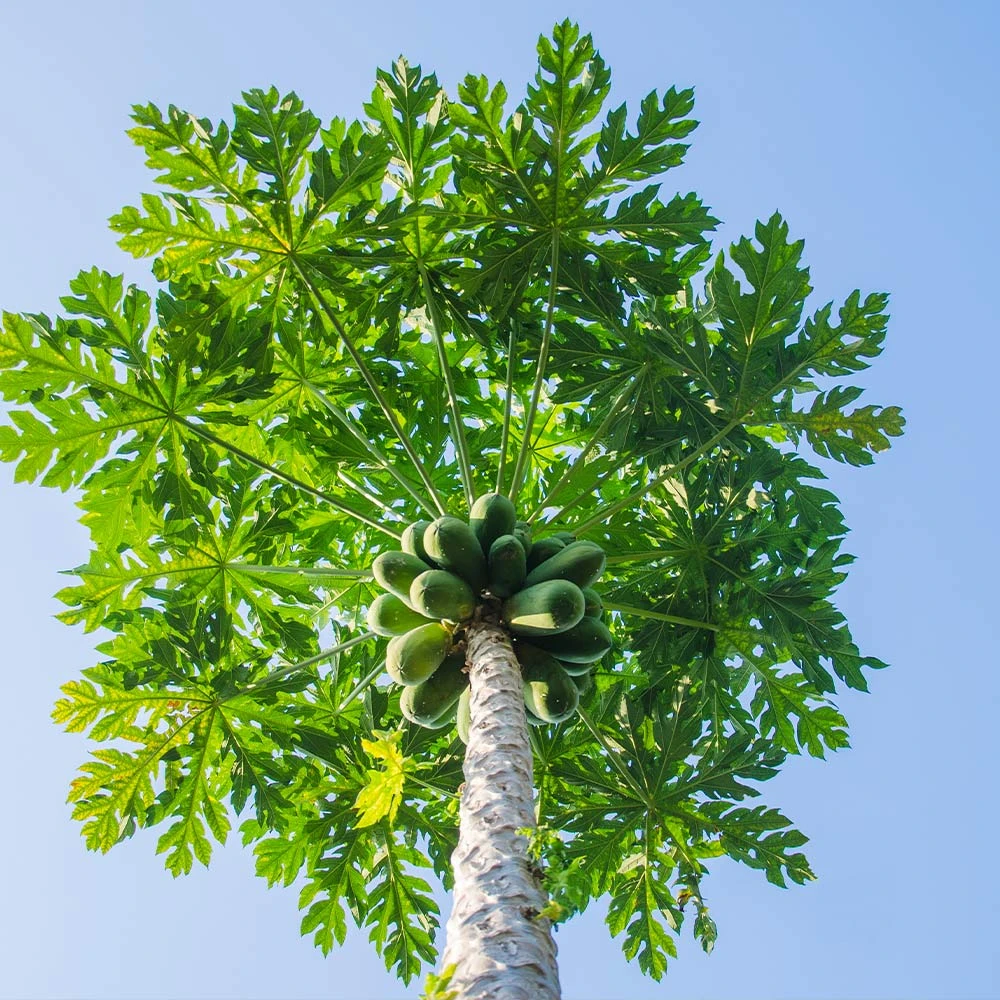
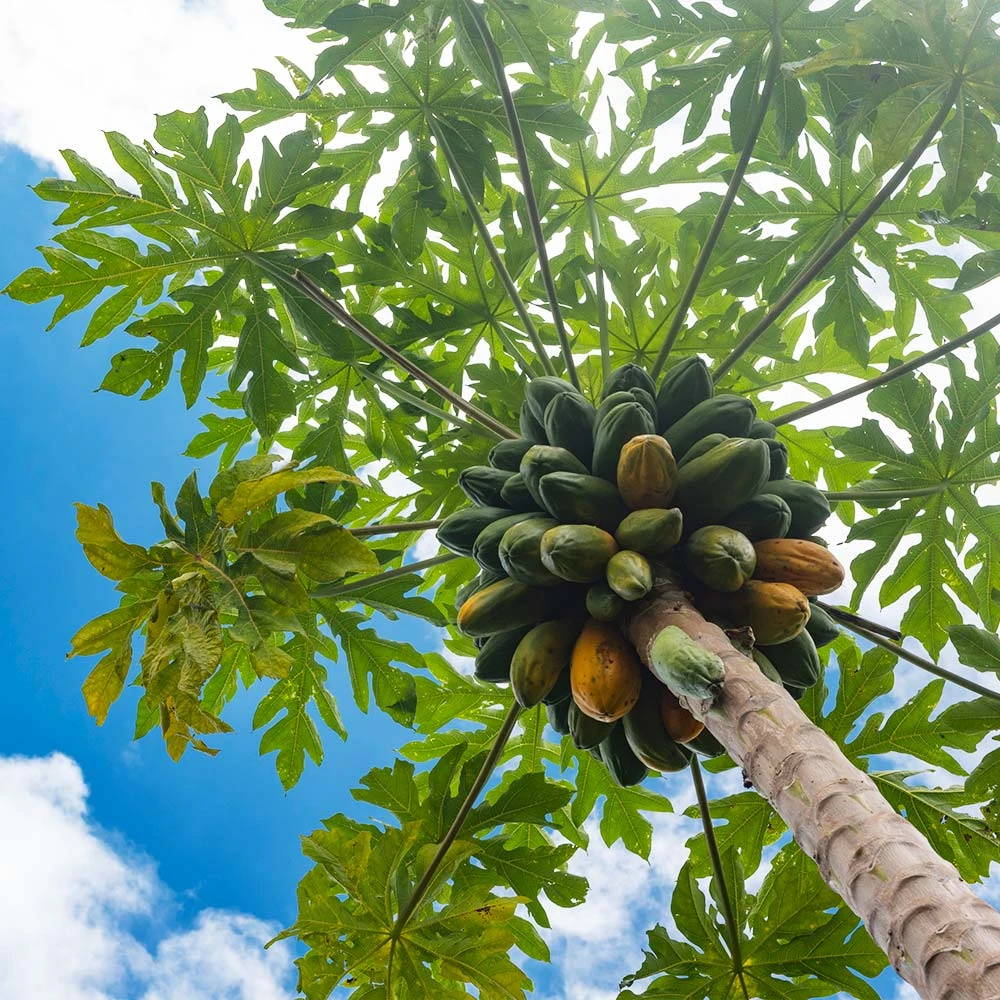


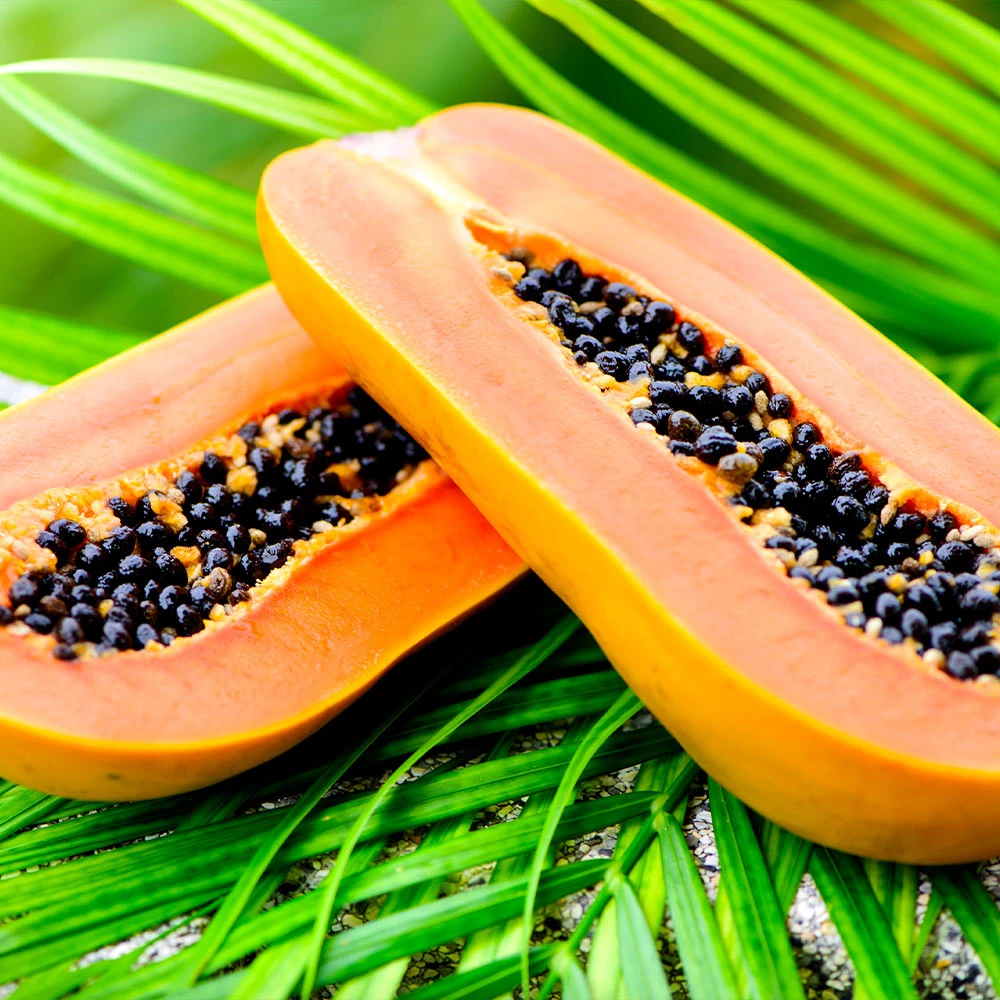
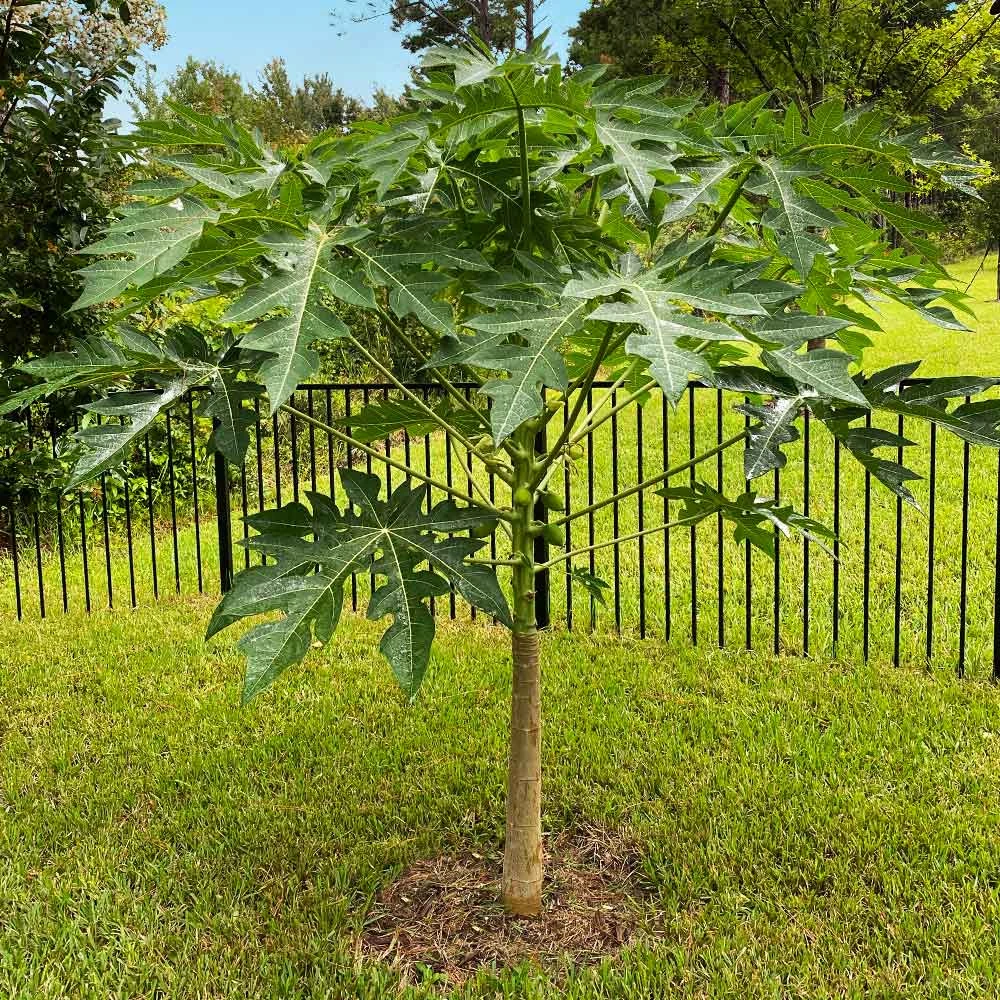

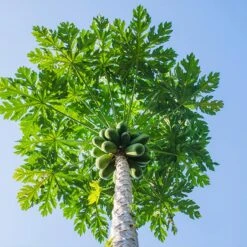

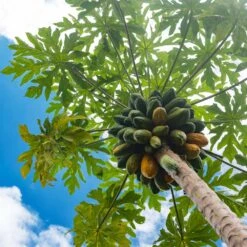

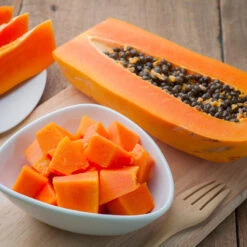
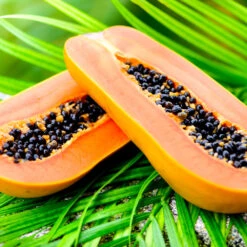
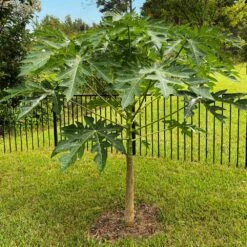


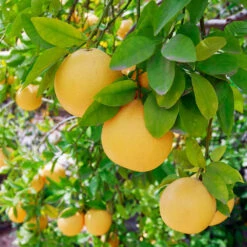

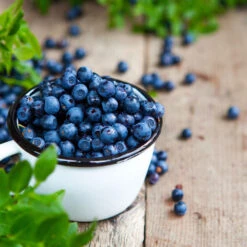
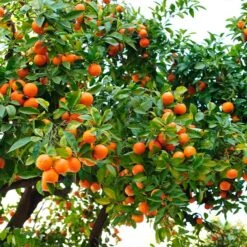
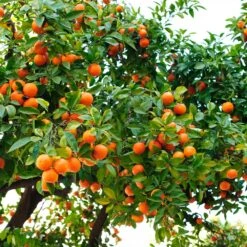


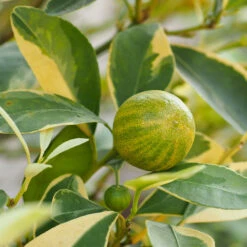
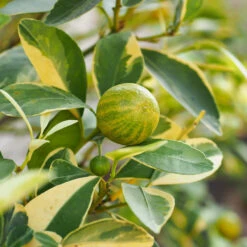
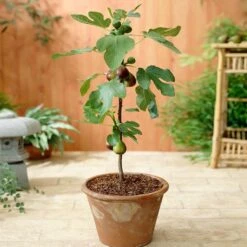
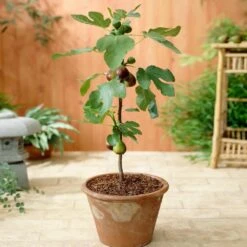

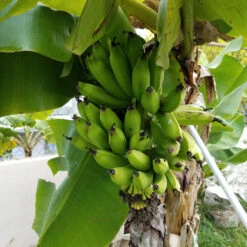


Reviews
There are no reviews yet.